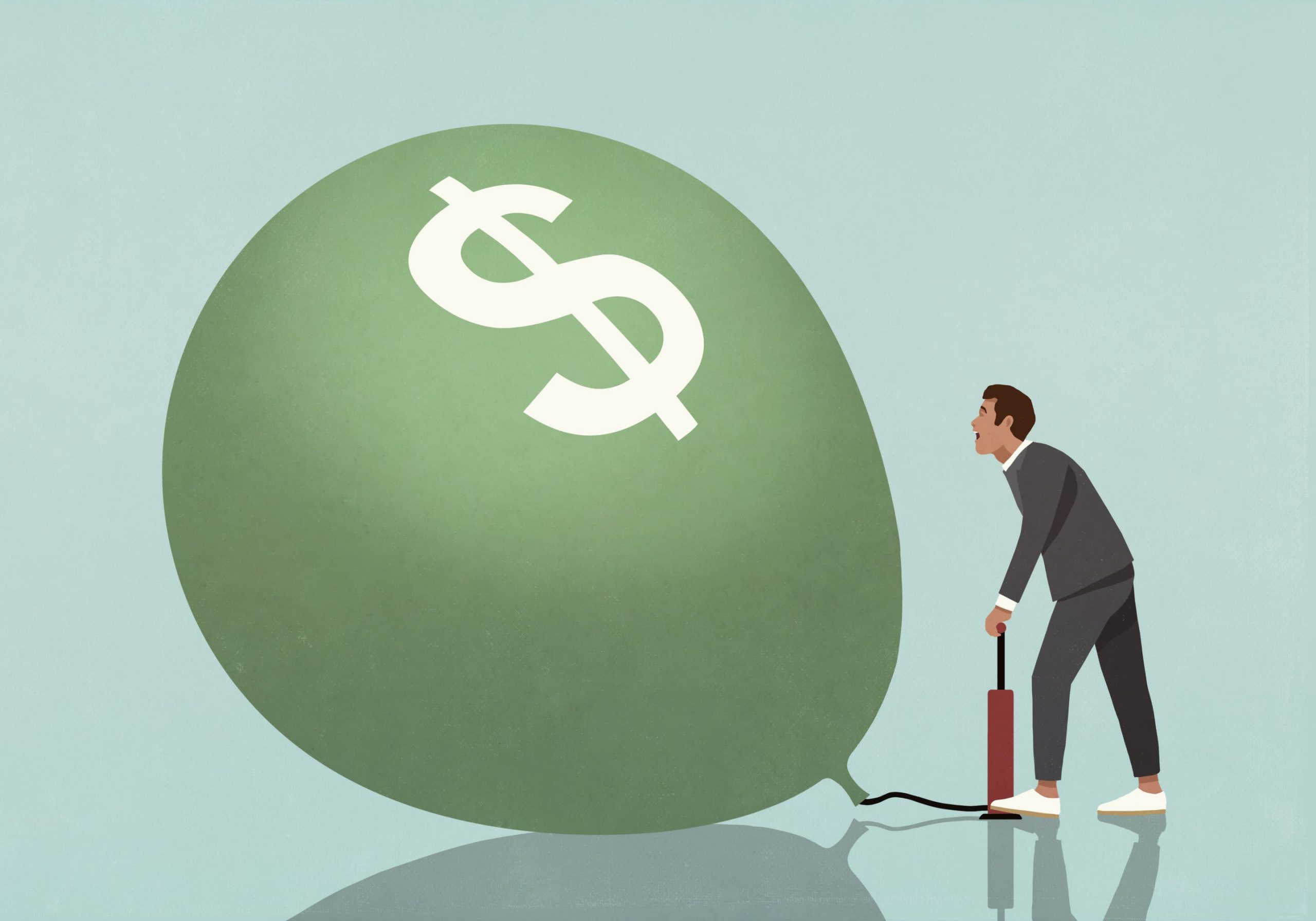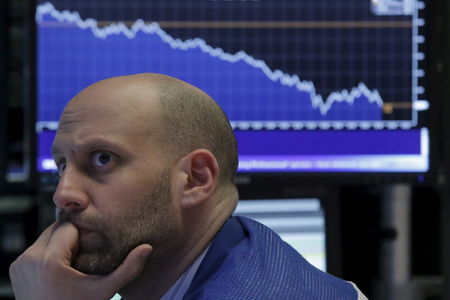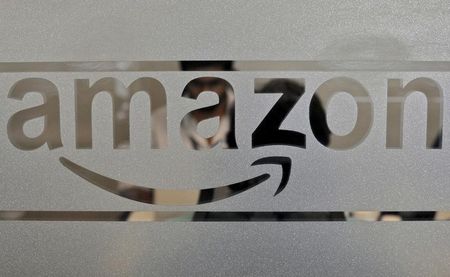Uncategorized
Here’s how bad inflation is in different countries around the world right now

American consumers have been plagued by soaring costs for everything from gas to used cars for over a year now.
In May, inflation in the U.S. touched a fresh four-decade high, leading a majority of Americans to see rising consumer prices as the most important issue facing the country today.
But inflation isn’t just a problem in North America.
Nations and economic zones around the world are all battling rising prices after the COVID-19 pandemic threw global supply chains into chaos, and the war in Ukraine pushed food and fuel costs to new heights. And their inflation is often much higher than the 8.6% year-over-year rate that the U.S. is struggling with right now.
Here are the inflation woes of 10 different countries. Some are experiencing humanitarian crises as a result of the soaring cost for basic necessities in their countries, while others have managed to mostly avoid inflation’s grip.
Turkey
Turkey has one of the highest inflation rates in the world. In June, consumer prices rose 78.6% year-over-year, according to the Turkish Statistical Institute.
The country is experiencing broad based inflation, but food and transportation cost increases have been particularly painful. Food prices soared 93.9% from a year ago in June, prompted by surging costs due to the war in Ukraine, while transportation costs skyrocketed 123.4% over the same period. Inflation has likely been exacerbated by a series of central bank interest rate cuts, but the country’s economic woes don’t end there.
Turkey’s currency, the lira, has been declining for several years, but it has collapsed since the start of the year, losing more than 23% of its value compared to the U.S. dollar. That’s on top of a 44% drop seen in 2021.
Argentina
In May, inflation in Argentina rose at a 60.7% annual rate, according to the country’s INDEC statistics agency. Food prices alone soared 33.7% through the first five months of the year, and Economists surveyed by the country’s central bank forecast inflation hitting nearly 73% by the end of 2022, Bloomberg reported in June.
On July 2, the situation in Argentina deteriorated even further after the country’s economy minister, Martin Guzman, suddenly resigned, prompting Argentina’s parallel exchange rate, which prices the Argentine peso against the U.S. dollar without taking into account Argentina’s currency controls, to sink 17% this week alone.
The drop in the Argentina’s currency has led panicked consumers to rush to buy goods as prices soar around the country.
“Prices had already increased 15% a few weeks ago and now they have added a ‘tweak’ to average 20%, although imported goods have jumped up 30%,” Luis Sacco, an Argentinian electrical shop owner told the Buenos Aires Times on Thursday.
The United Kingdom
Inflation in the United Kingdom hit a 40-year high in May, rising at a 9.1% annual rate. The country is now facing a cost of living crisis, with food prices soaring at an 8.7% annual rate in May and energy bills skyrocketing as much as 50% in April.
The Bank of England said in June that it now expects inflation to peak at 11% this year before coming down in 2023. The central bank has raised its key interest rate from near zero to 1.25% since the late last year in hopes of cooling rising prices.
Eurozone
Euro area annual inflation is expected to rise at an 8.6% annual rate in June, up from 8.1% in May, according to Eurostat, the statistical office of the E.U.
Europeans are in the midst of an ongoing energy crisis sparked by the war in Ukraine and subsequent Western sanctions against Russia. Energy prices soared 39.2% from a year ago in May, as the E.U. continues to try and wean itself off a reliance on Russian oil and natural gas. Food, alcohol, and tobacco prices also jumped 7.5% year-over-year in May.
European Central Bank President Christine Lagarde wrote in a late May blog post that the Euro area will consider rate increases, exiting “negative interest rates by the end of the third quarter” in an attempt to slow inflation.
South Korea
In June, South Korean inflation hit a 24 year high, rising at a 6% annual rate. South Koreans are facing broad-based price increases, but energy costs are rising the most. Petroleum product prices jumped 39.6% year-over-year last month, official data revealed on Tuesday.
The Bank of Korea has raised its key interest rate five times since last August, pushing it to 1.75%, and Governor Rhee Chang-yong said this week that another rate increase could be in the cards if inflation continues to be an issue.
Ethiopia
In May, inflation in Ethiopia soared to a 37% annual rate, with food inflation rising 38% over the same period. The consequences of inflation in Ethiopia have been devastating, pushing the country into a humanitarian crisis, according to the U.N.
On top of that, deadly clashes between the militant groups, including the Oromo Liberation Army (OLA), and the Ethiopian government have left hundreds dead, and made the economic situation even worse.
Japan
Inflation in Japan hasn’t historically been an issue, in fact, for years the country was more concerned with low growth and deflation. From 2010 to 2020, inflation in Japan has averaged roughly 0.42%.
In May, however, the country saw its annual inflation rate jump to 2.5%, slightly above its central bank’s target of 2%. [AKA, it might not seem like much, but it’s a lot for this country?]
While other central banks have been raising interest rates to combat inflation, The Bank of Japan has kept short-term rates at -0.1%, the loose monetary policy has led the country’s currency to depreciate to a 24-year low against the U.S. dollar since March.
Israel
Israel’s annual inflation rate touched an 11-year high of 4.1% in May, topping the government’s 1% to 3% target range. The country’s central bank lifted its key interest rate from 0.75% to 1.25% on July 4 in an effort to cool rising housing, food, and fuel prices, but, as officials noted in May, inflation in Israel remains “significantly lower than in most advanced economies.”
Israel’s economy is expected to grow 4.9% in 2022, even amid the war in Ukraine and COVID-19 lockdowns in China which have led to rising inflationary pressure.
South Africa
In South Africa, inflation moved to a five-year high in May, rising 6.5% year-over-year. The increase was a shock to many, Razia Khan, head of research for Africa and the Middle East at Standard Chartered Bank told Bloomberg in June.
“Until now, there was a belief that although inflation in South Africa was rising, [but] unlike the rest of the world, it was not seeing pressures that it took it way beyond ‘normal’ inflation ranges. The shock of a single CPI print now calls into question that assumption,” he said.
South Africa’s central bank has raised interest rates at its last four monetary policy meetings to try to cool the rising cost of living. The country’s key interest rate has jumped from 3.5% to 4.75% since November, and Governor Lesetja Kganyago has said another 50 basis point rate increase could be on the way.
Sri Lanka
Inflation in Sri Lanka hit a record high in June, rising at a 54.6% annual rate, and the country’s central bank Governor, P. Nandalal Weerasinghe, admitted to reporters on Thursday that it could go as high as 70% by the end of the year. He now expects Sri Lanka’s economy to contract between 4% and 5% this year, down from 3.7% growth in 2021.
The country is facing an unprecedented economic and humanitarian crisis, with crippling food shortages and starvation leading to mass protests against President Gotabaya Rajapaksa.
Sri Lanka has also been forced to declare bankruptcy after it was unable to pay back billions in loans it took out from China which were used by the government for what critics have said are unnecessary infrastructure projects. The country is now seeking a $4 billion loan from the International Monetary Fund (IMF) to pay for essential goods.
This story was originally featured on Fortune.com
Uncategorized
BofA Securities maintains Amazon.com at ‘buy’ with a price target of $154.00
Uncategorized
Six people in critical condition, one still missing after Paris blast – prosecutor

5/5
© Reuters. French firefighters and rescue forces work after several buildings on fire following a gas explosion in the fifth arrondissement of Paris, France, June 21, 2023. REUTERS/Gonzalo Fuentes
2/5
PARIS (Reuters) – Six people remained in a critical condition and one person was believed still missing on Thursday, one day after a blast ripped through a street near Paris’ historic Latin Quarter, the city’s public prosecution office said. “These figures may still change,” prosecutor Maylis De Roeck told Reuters in a text message, adding that around 50 people had been injured in the blast, which set buildings ablaze and caused the front of one to collapse onto the street. Of two people initially believed missing, one has been found in hospital and is being taken care of, the prosecutor said, adding: “Searches are ongoing to find the second person.” Authorities have not yet said what caused the explosion, which witnesses said had followed a strong smell of gas at the site. The explosion led to scenes of chaos and destruction in the historic Rue Saint Jacques, which runs from the Notre-Dame de Paris Cathedral to the Sorbonne University, just as people were heading home from work. It also destroyed the facade of a building housing the Paris American Academy design school popular with foreign students. Florence Berthout, mayor of the Paris district where the blast occurred, said 12 students who should have been in the academy’s classrooms at the time had fortunately gone to visit an exhibition with their teacher.
“Otherwise the (death toll) could have been absolutely horrific,” Berthout told BFM TV. She said three children who had been passing by at the time were among the injured, although their lives were not in danger.
Uncategorized
4 big analyst cuts: Alcoa & DigitalOcean shares drop on downgrades

© Reuters.
Here is your Pro Recap of the biggest analyst cuts you may have missed since yesterday: downgrades at Alcoa, DigitalOcean, Teleflex, and Xcel Energy.InvestingPro subscribers got this news in rapid fire. Never be left in the dust again.Alcoa stock drops on Morgan Stanley downgrade Alcoa (NYSE:) shares fell more than 3% pre-market today after Morgan Stanley downgraded the company to Underweight from Equalweight and cut its price target to $33.00 from $43.00, as reported in real time on InvestingPro.The firm sees a significant decline in consensus estimates, and as negative earnings revisions materialize, it believes the stock will face downward pressure and underperform.The analyst’s estimates for EBITDA in Q2, 2023, and 2024 are substantially lower than the consensus. The stock is currently trading above its historical average. The firm said its downward revisions in earnings estimates and price target are attributed to the company’s high operating leverage to aluminum prices.DigitalOcean stock plunges on downgradePiper Sandler downgraded DigitalOcean (NYSE:) to Underweight from Neutral with a price target of $35.00. As a result, shares plunged more than 5% pre-market today.The company reported its last month, with revenue beating the consensus estimate, while EPS coming in worse than expected. Furthermore, the company provided a strong outlook, which was above the Street estimates.2 more downgradesTeleflex (NYSE:) shares fell more than 3% yesterday after Needham downgraded the company to Hold from Buy, noting that UroLift expectations may still be too high.According to Needham, their checks indicate that urologists are reducing their use of UroLift due to its retreatment rates, reimbursement cuts, and increasing use of competing procedures. This is also supported by their Google Trends data analysis, which indicates decreasing search interest in UroLift.BMO Capital downgraded Xcel Energy (NASDAQ:) to Market Perform from Outperform and cut its price target to $64.00 from $69.00 to reflect the lower-than-expected terms of the company’s regulatory settlement in Colorado.Amid whipsaw markets and a slew of critical headlines, seize on the right timing to protect your profits: Always be the first to know with InvestingPro.Start your free 7-day trial now.

 Forex3 years ago
Forex3 years agoForex Today: the dollar is gaining strength amid gloomy sentiment at the start of the Fed’s week

 Forex3 years ago
Forex3 years agoUnbiased review of Pocket Option broker

 Forex3 years ago
Forex3 years agoDollar to pound sterling exchange rate today: Pound plummeted to its lowest since 1985

 Forex3 years ago
Forex3 years agoHow is the Australian dollar doing today?

 Cryptocurrency3 years ago
Cryptocurrency3 years agoWhat happened in the crypto market – current events today

 World3 years ago
World3 years agoWhy are modern video games an art form?

 Commodities3 years ago
Commodities3 years agoCopper continues to fall in price on expectations of lower demand in China

 Economy3 years ago
Economy3 years agoCrude oil tankers double in price due to EU anti-Russian sanctions






















